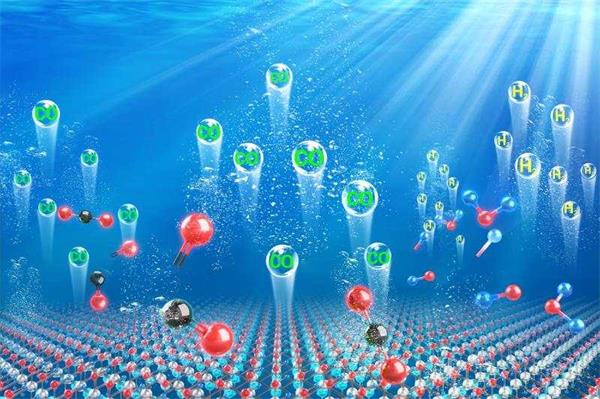Recently, Tianjin University’s professor Feng Wei's team has successfully synthesized two-dimensional gersiloxenes with tunable bandgap for photocatalytic H2 evolution and CO2 photoreduction to CO. It shows a great potential for an excellent photocatalyst with high efficiency for hydrogen production and reduction of CO2 to CO at room temperature. The relevant research work has been published in Nature Communications, an international journal with high authority.
With the development of industrial societies, the Greenhouse Effect is a huge environmental challenge for humans. As we all know, it is CO2 which is exhausted due to fossil fuel combustion that causes the Greenhouse Effect. The global rising temperature becomes higher gradually and severe weather events increase year by year due to the high atmospheric CO2 concentration. Therefore, seeking a new green energy source for the reduction and utilization of CO2, is a focus of global scientists.
Photocatalysis has been attracting wide attention and recognition in energy utilization due to its high efficiency, stability, clean, and non-secondary pollution advantages. It's an environment-friendly cleaning technology. The principal is the ability of photocatalyst to oxidation and reduction under the illumination, which can purify the pollutants, synthesize materials and transform. Actually, the performance of photocatalyst is the key point of this technology. It decides the potency of catalytic reaction.

Professor Feng Wei's team firstly synthesize a new gersiloxenes with tunable bandgap by controlling the content of Ge and Si precisely based on theoretical calculation and structure design.
This new two-dimensional material shows outstanding photocatalytic performance due to its suitable energy band, a wide range of absorption, larger surface-to-volume ratio and high chemical activity. The experimental results show that such two-dimensional photocatalyst can be used to produce hydrogen and reduce CO2 to CO with high efficiency at room temperature. What's more, the efficiency of the CO2 photoreduction to CO is dozens even several-hundred times higher than the previous photocatalysts.
"This new two-dimensional material has presented the photocatalytic characteristics of high efficiency, as a green and environmental-friendly method", Professor Feng Wei said. It is also an ideal material to fabricate advanced energy-conversion and photoelectronic nano-devices. It is expected to provide insightful understanding and technical support for design, preparation and utilization of a new semiconductor by optimizing electronic and photoelectric structure. It will largely broaden the application prospects in multiple fields.
By: Chen Yuxuan
Editors: Gabriela Venegas, Sun Xiaofang, and Feng Yiyu, Professor Feng Wei's Team, School of Materials Science and Engineering






